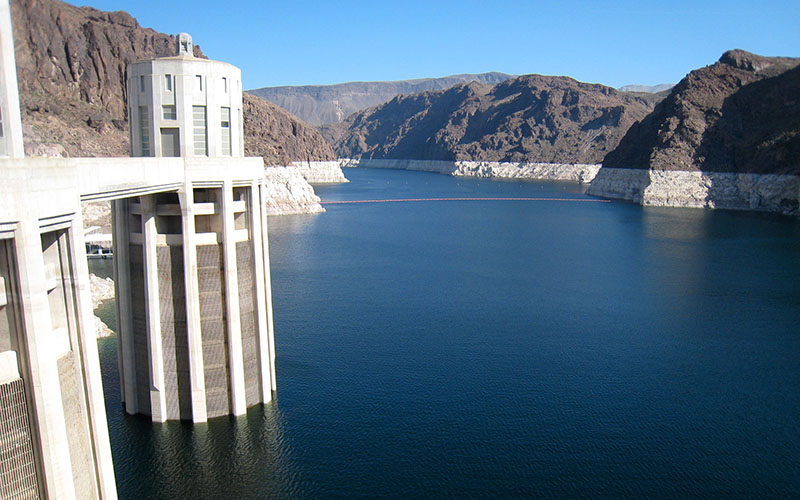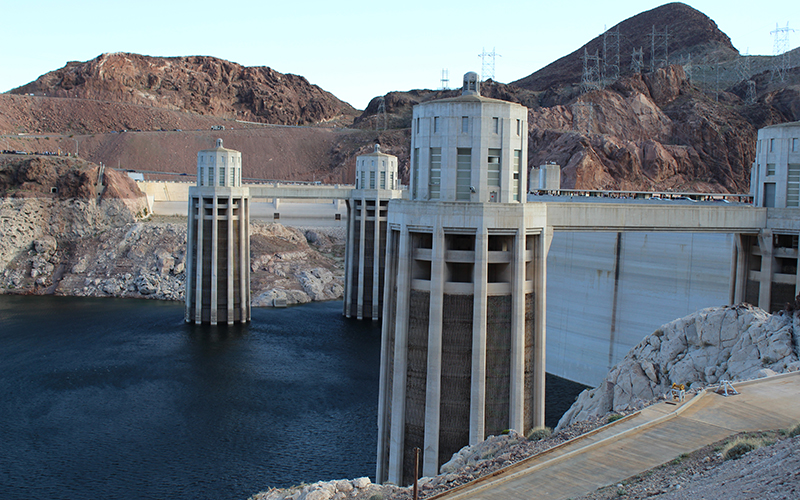
The multistate drought contingency plan would affect how much each state is allowed to draw from the Colorado River if levels at Lake Mead continue to fall, as a decades-long drought in the region continues. (Photo by Sean Hobson/Creative Commons)
WASHINGTON – After months of wrangling, state and tribal officials, industry and agriculture representatives walked out of a meeting at the end of last month with high hopes they were nearing agreement on a complex water-conservation plan.
And at the beginning of this month, they found themselves grappling with new demands that threatened to derail the deal.
That two-steps-forward, one-step-back process is typical of the delicate negotiations as Arizona officials try to hammer out how the state will implement its share of a multistate drought contingency plan that would take effect if water levels in Lake Mead continue to drop.
And the clock is ticking: If Arizona cannot come up with proposal to present to state lawmakers for their approval this spring, the state runs the risk of having federal officials making decisions for the state.
But with the multistate Colorado River Water Users Association set to begin its annual conference Wednesday, most appear cautiously optimistic that a deal will get done in the near future.
Planning has been going on for years but the most-recent talks, on how the contingency plan would be implemented in Arizona, have been the subject of seven meetings of the Lower Basin Drought Contingency Plan Steering Committee since late July.
The last meeting, on Nov. 29, included the surprise announcement that Gov. Doug Ducey would include $30 million in his next budget request to help fund the plan.
“We worked really hard for the last six to eight weeks to achieve this outcome,” Tom Buschatzke, director of the Arizona Department of Water Resources, said at the outset of that meeting.
In a subsequent editorial, Ducey said that funding request, and commitments from other parties involved in the deal, “has generated real momentum behind this plan…. Let’s seize the moment.”
The moment didn’t last long. By Dec. 3, Buschatzke was raising concerns about an amendment proposed by the Central Arizona Water Conservation District, which governs the Central Arizona Project, that would have let it keep 75,000 acre-feet of water a year in exchange for paying the Colorado River Indian Tribes to divert a like amount.
“This really caught everybody by surprise,” said Gov. Stephen Roe Lewis of the Gila River Indian Community, which is entitled to about one-quarter of CAP’s annual water delivery.
“There are some real issues with it that concern us,” Lewis said. “The friendly amendment undoes a lot of the work that has been done so far.”
A group of agricultural irrigation districts in Pinal County that are CAP users continue to insist on assurances that infrastructure will be funded to shift them from river water to groundwater by 2023 as the plan requires, seven years sooner than currently required.
Paul Orme, an attorney representing Pinal County districts, said at the Nov. 29 meeting he “doesn’t really intend to support or oppose” the plan until he and his clients get explicit funding assurances.
But other parts of the plan are moving forward.
After offering its controversial amendment two weeks ago, the Central Arizona Water Conservation District last Thursday voted to approve the Nov. 29 plan. But that approval included language that there is still a “need for additional discussions to address remaining issues,” including farm and developers’ allotments.
-Cronkite News video by Brendan Campbell
The Gila River Indian Community on Dec. 5 approved a plan that would provide up to 33,185 acre-feet of water a year to the Central Arizona Groundwater Replenishment District, which is part of the CAWCD. That agreement would address concerns of developers in central Arizona and could ease pressure for the CAP’s amendment.
Lewis said he will sign that plan once the overall contingency plan wins final approval. He said in a Dec. 5 announcement that his tribe’s plan will “build momentum to have Arizona approve DCP and protect Lake Mead, but at the same time ensure that water supplies are available for an important sector of Arizona’s economy.”
Despite the ongoing hiccups, official optimism remains high that an overall deal can be done.
The U.S. Bureau of Reclamation said it had been working with states in the basin in hopes of getting a plan by the end of this year. In a statement Friday, the bureau said it “remains cautiously optimistic that the parties will find a path forward – because finding a consensus deal … is in each state’s best interest.”
Rep. Rosanna Gabaldon, D-Sahuarita, and a member of the steering committee, said last week that she believes the remaining issues will be resolved and the legislature will approve the plan.
“The conversations that are being had at the steering committee, I believe those can be ironed out,” Gabaldon said. “This is a nonpartisan issue and both sides of the aisle are working together to move this forward at the legislature.”
But Ted Cooke, CAP general manager and co-chair of the steering committee with Buschatzke, reminded all parties before the last meeting broke up that there is no time to waste.
“There’s lots of work to do as far as agreements between parties and things like that, that will probably take months,” Cooke said. “But we do have a practical deadline which is the end of the year, to have something ready for the legislature.
“We do not want to bring something in that we’re still debating when that happens,” he said.
